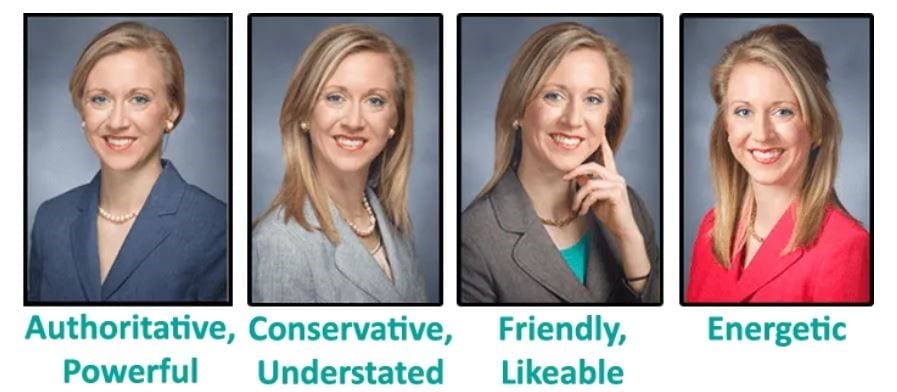Everywhere we go, whatever we are wearing, we are sending messages to those around us.
The question is not whether you care about fashion, it’s more about what you’re communicating intentionally or unconsciously through your choices.
People process visual details instantaneously through a process called thin-slicing. That’s when the brain makes millisecond judgements based on new stimulus. It happens without us even knowing it. For example, have you ever had the feeling that you don’t trust someone you just met? By contrast, have you met someone and quickly determined that they are trustworthy and reliable? Why is that?
That gut feeling, commonly called intuition or a first impression, is really part of the very fast-paced mental process of thin-slicing. It’s how we continually judge books by their covers, all day, every day…and we all do it.
Thin slicing is an important to understand when it comes to being an effective communicator, especially with nonverbal cues and elements. Your clothes, accessories, hairstyle, fragrance, posture, body language, tone of voice, and the level of energy with which you move and speak, all add up to create impressions in others. In business, especially in face-to-face meetings or services (including virtual), this can mean the difference between making the sale or having it go to a competitor. The simple truth is that aside from price, people buy from people they like.
Look at these before/after photos of two successful actors – Ashton Kutcher and John Goodman.


If they were not celebrities and you had never met or heard of them, you would likely have different impressions of them if you saw them at a business event and they looked as they do in the photo on the left versus the photo on the right. If you spoke to them and they had their eyes cast downward and were fidgety, your impression would be further determined.
When meeting someone or going to a business event for the first time, always consider your audience.
How do they dress where you’re going? What personal characteristics are your prospective clients looking for in someone providing your type of service?
For example, someone who is a graphic designer meeting with a prospective client can dress and behave a bit more casually and quirky than someone who is a banker because one is expected to be creative while the other is expected to be more serious and conservative. That said, if the prospective customer was a farmer or machine shop, even the banker would not want to meet them dressed in a suit. They would stand out like a sore thumb and would be considered snobby. Instead, the banker should wear a casual pair of pants and and open-collard shirt (men) or pants with a nice top or sweater (women) with appropriate flat shoes. The banker needs to look respectable and trustworthy without looking snobbish. A firm handshake with good eye contact and speaking succinctly in even tones would help to create a positive first impression.
Consider what you want to project when choosing clothing and hairstyles.
Colors communicate subliminal messages, as do hairstyles and clothing choices. Take a look at this woman in different colors, hairstyles and outfits. Each one communicates something different.

Here are some image messages with suggested color combinations:
- Authoritative, Powerful – Combine deep navy or black, white or off-white, and bright red
- Conservative, Understated – Add gray to the group above
- Creative, Fashionable – Combine secondary colors such as olive, purple red or yellow red
- Friendly, Likeable – Combine camel, tan, or taupe with blue and pale gold or yellow
- Refined, Sophisticated – Combine navy or black, beige and deep green
- Commanding Attention – Combine navy, pale yellow and bright red
- Trustworthy, Credible – Combine navy, light blue and deep red
- Efficient, Intelligent – Combine gray, navy and pale yellow
- Competitive, Gregarious – Combine navy or black, off-white and bright red
- Energetic – Combine navy, pale yellow or gold and bright red
- Casual, Natural – Combine brown, camel, tan or taupe with bright or light blue
The Bottom Line: Think about the impressions you want to make in business settings before you walk out the door. Being authentic is important, but sometimes there’s a compromise between what you prefer to wear and what you should wear.
Interested in expanding the self-development opportunities for your team?
Radiant Image customizes programs based on your employee’s needs. We can work one-on-one with individuals or create workshops for teams. Learn more about our business services or contact Candace Sanborn at [email protected] for a free consult!

